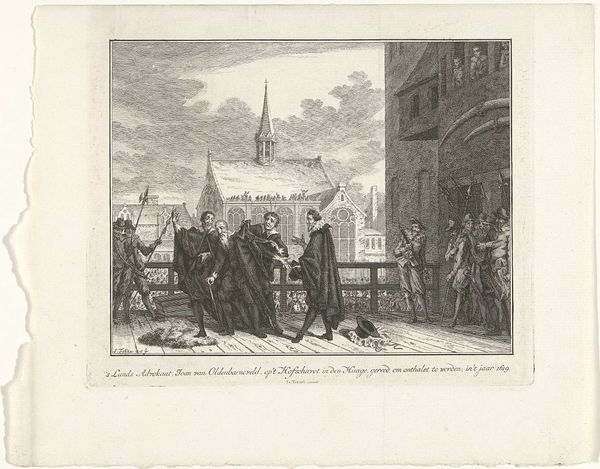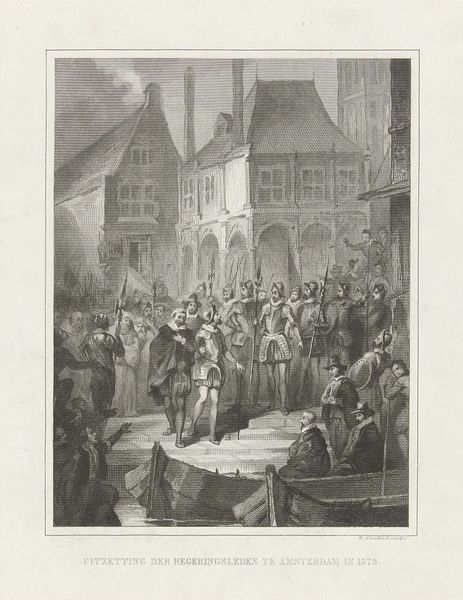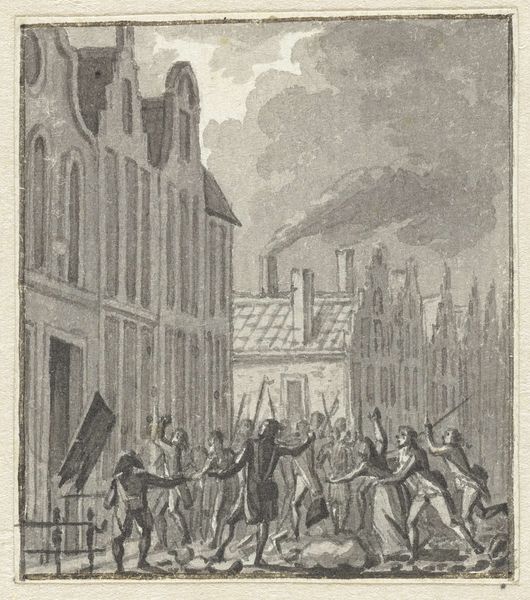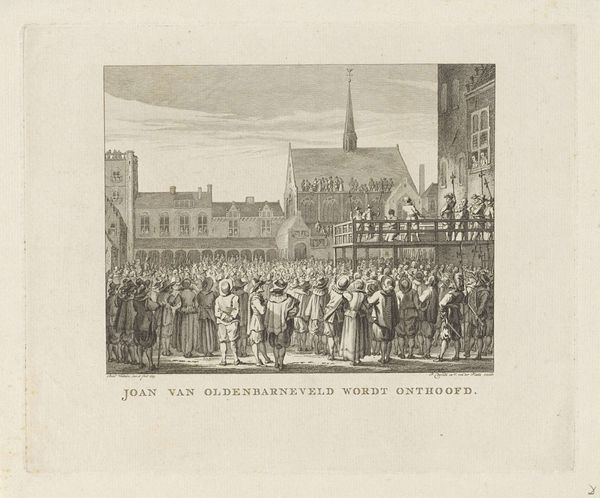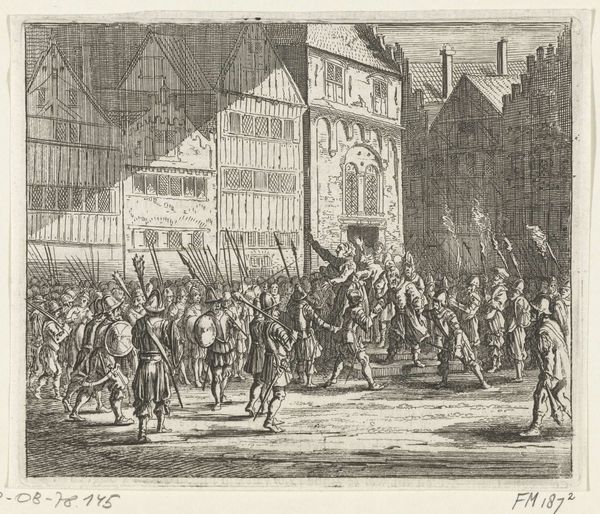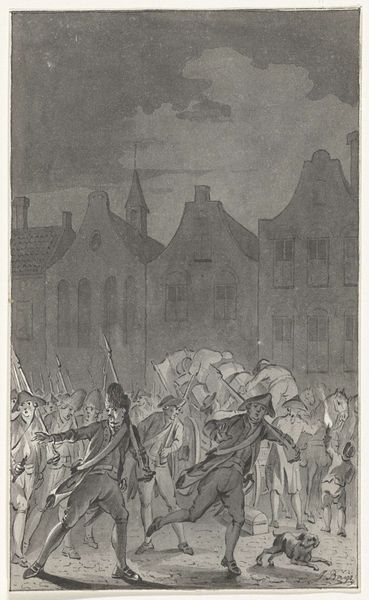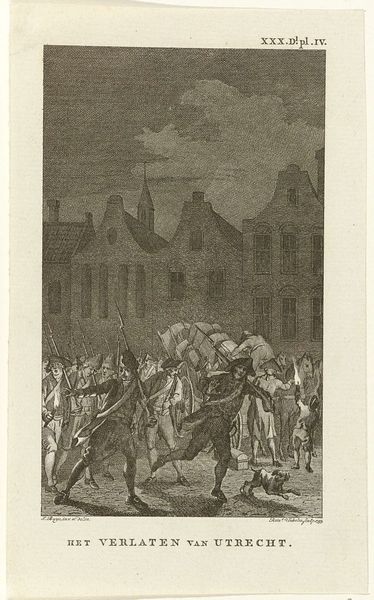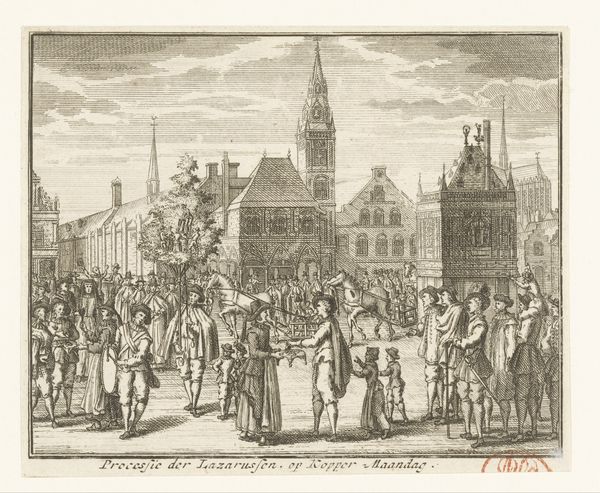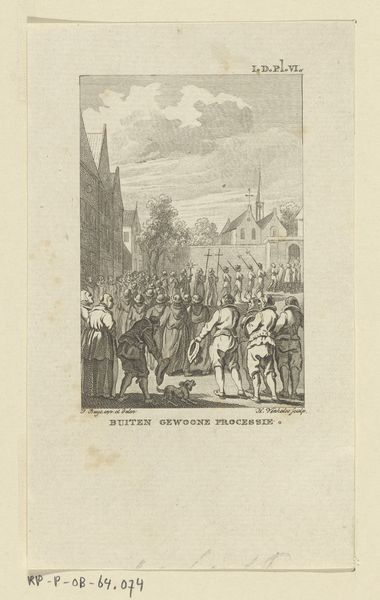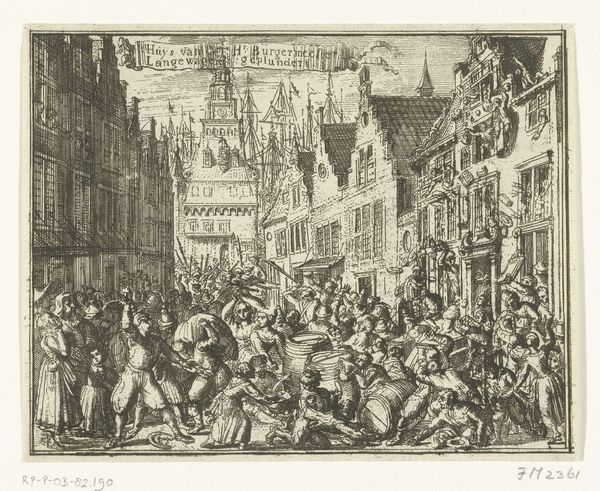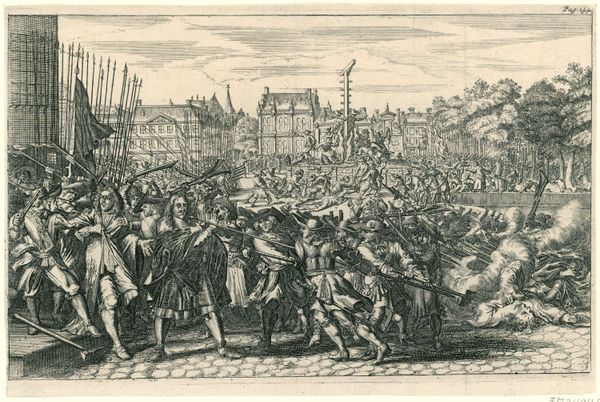
print, engraving
#
baroque
# print
#
cityscape
#
history-painting
#
engraving
Dimensions: height 170 mm, width 207 mm
Copyright: Rijks Museum: Open Domain
Curator: Simon Fokke created this engraving sometime between 1747 and 1759. Titled “Johan van Oldenbarnevelt op het schavot, 1619,” it captures a significant moment in Dutch history. Editor: Right, my gut reaction? Bleak. Very little light, all hard lines, a story being told that I already know isn’t going to have a happy ending. The stark architectural details kind of amplify the grim mood. Curator: Indeed, the composition is strategically designed. The severe verticals and horizontals establish an atmosphere of oppressive rigidity, typical of Baroque art used for history painting. Note the careful balance between the detailed foreground and the receding background elements. Editor: It is balanced, but it's a tense kind of balance, you know? It feels weighted down somehow, particularly on the right side, the architectural mass seems like a direct reflection of state power...crushing. Curator: An insightful interpretation. The cityscape in the background serves not merely as a backdrop, but as an integral component that conveys a broader historical narrative. This style underscores the engraving’s dual role as a work of art and a historical document. Editor: Looking at the crowd scenes further back, rendered with these incredibly fine lines... It's unsettling. Are we meant to identify with them as witnesses, or are we positioned, as modern viewers, to maybe feel implicated? Curator: It also reveals a semiotic code embedded in the textures. The textures produced through engraving elicit visual responses akin to actually viewing the historic execution scene. Editor: Simon Fokke makes an almost uncomfortable attempt at that feeling of bearing witness, or being a kind of spectator. Overall, I leave it feeling cold and reflective on the function of state power, I have to admit. Curator: The formal precision employed by Fokke evokes this emotional and intellectual resonance. It goes beyond the purely representational, venturing into a potent contemplation on historical consequences and legacy.
Comments
No comments
Be the first to comment and join the conversation on the ultimate creative platform.
